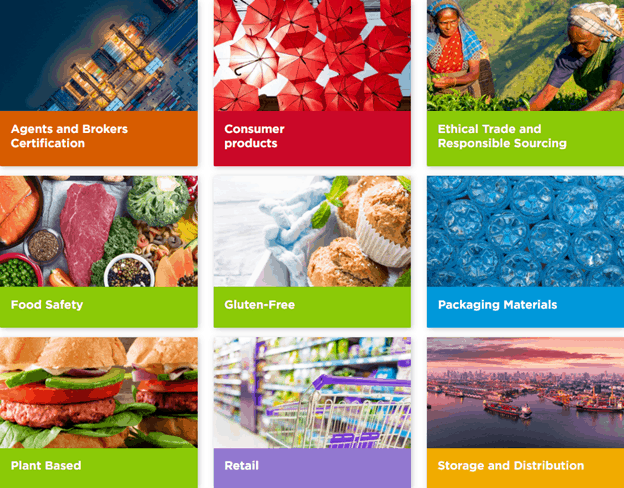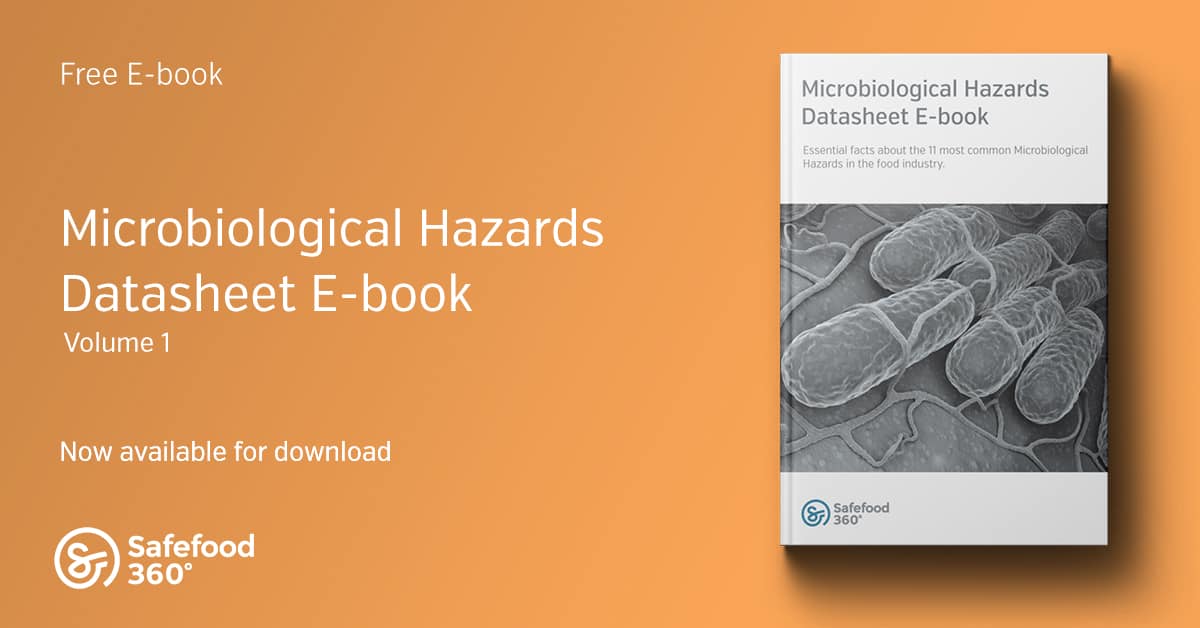The role and importance of standards in modern food safety
Without food safety confidence in what we produce and consume can quickly become a Gordian knot and our global supply chains would likely come to an impassable halt.
In previous blogs, we’ve explored high-level questions such as why FSMA is necessary, how it might affect the GFSI, and even how the original need for HACCP has evolved to a series of common principles and methods but separate systems, ultimately leaving practitioners exposed to an inconsistent and fluid framework under which to identify, assess, and control what are essential activities.
The common theme of all these pieces has remained that food safety, above all else, is essential regardless of the scheme or regulatory requirement.
No matter where you are in the world, local legislation exists to ensure that food businesses are responsible for providing safe, quality products.
Food safety, above all else, is essential regardless of the scheme or regulatory requirement
One prerequisite to achieving this goal is that food businesses need to work with other like-minded companies to produce, process, and distribute food that is safe to consume.
To be absolutely clear on this, the market demands nothing less from us, and to be sure, this past year and a half has bolstered the fact that we owe nothing less, and quite a bit more, than this to our consumers.
The market demands nothing less from us … and we owe nothing less [than this] to our consumers
When I ask any company in the United States if they are certified to a particular standard I will undoubtedly receive any number of answers. “We’re certified to SQF”, “We only need to comply with the PrimusGFS standard”, or “As long as we comply with the FSVP requirements, we’re fine”.
But what about those companies that want to be world-class providers?
Does being a world class provider of food mean you need to be certified to more than one standard?
Does being a world-class provider of food mean that you need to be certified to more than one standard, or a GFSI scheme as well as adhere to the FSMA requirements while looking forward to the New Era for Smarter Food Safety Blueprint?
If one thing is certain over the past few decades, in the words of Bob Dylan – the times they are a-changing!
So, with the changes that have occurred to the worldwide food supply chain, the smart manufacturer should strive to do what they can to provide as much assurance to the public as possible.
While there are smart technology solutions across food safety management and supplier quality management and service solutions such as LGC ASSURE, in order to answer this question properly, we need to take a few steps back.
What are standards and why are they needed for food safety?
Central to ensuring safe quality food is the need for a business to have an articulated food safety strategy and vision (click here to create your corporate vision for food safety compliance).
While this can be defined and realized internally, it requires a shared commonality with suppliers and stakeholders who align with your vision to ensure it sustains throughout the supply chain and reaches the end consumer in a form that is not just demonstratable, but also sustainable.
A recent technical report conducted by Birkbeck, University of London, focused on the compliance performance of Dutch food businesses against regulations and whether the business is certified to a recognized food safety management system.
In this, the Netherlands Food and Consumer Product Safety Authority (the NVWA), highlighted how public-private partnerships are becoming increasingly important in our changing society and how they can validate claims for true “earned recognition” in seeking a lighter touch in regulatory oversight.
This is where the compliance requirements of legislation, retailer-owned standards, and the GFSI are relevant.
GFSI recognized schemes are joint partners responsible for safeguarding food safety today and in the future.
Recognition to a GFSI standard as well as regulatory requirements…are the definitive gold standard
GFSI standards such as the BRCGS and others are the main platforms through which compliance is addressed, and are typically seen as the benchmark in the industry.
While many businesses already operate in this manner, the Birkbeck report also shows evidence that businesses who operate to a GFSI standard as well as regulatory requirements to the region you wish to do business with (i.e., FSMA) perform better.
Compliance to a GFSI standard as well as regulatory requirements….[are] the gold standard
As such, this dual-hybrid approach should be seen as the gold standard, and while businesses must conform to local legislation where they operate, they should also endeavor to achieve both at a minimum.
GFSI certification: What’s in a name?
GFSI certification can be attained through certification to several standards such as SQF, FSSC 2000, IFS, or the BRCGS.
Although equal in stature under the GFSI, there are benefits and disadvantages to each standard specific to what the desired business goals you wish to achieve are.
To quote the bard, while a rose by any other name would smell just as sweet, for the purposes of the question in this article and brevity’s sake, we will continue by focusing on one standard in specific – the BRCGS.
BRCGS is the operator of the world’s most rigorous 3rd party quality and safety certification schemes.
Unlike other schemes, it offers a wider range of variety of focused schemes specific to the objective goal of the business.
These certifications include the Global Standards for Food Safety, Packaging and Packaging Materials, Storage and Distribution, Consumer Products, Agents and Brokers, Retail, Gluten Free, Plant-Based and Ethical Trading.
Certification to any of these standards sets the benchmark for Good Manufacturing Practices and helps provide assurance to brands and consumers that the products they are consuming are safe, legal, and of high quality.
FSMA certification: The mighty tome
Unless you are very new to the game, you will have more than likely heard of FSMA.
The Food Safety Modernization Act defines the rules for having the collaborative intent to provide consumer protection from adulterated foods and ingredients across the entire food supply chain, incident prevention, and appropriate risk-based responses to adverse events.
- Accredited Third-Party Certification
- Current Good Manufacturing Practice and Hazard Analysis and Risk-Based Preventive Controls for Human Food
- Current Good Manufacturing Practice and Hazard Analysis and Risk-Based Preventive Controls for Food for Animals
- Foreign Supplier Verification Programs (FSVP)
- Laboratory Accreditation
- Food Traceability
- Mitigation Strategies to Protect Food Against Intentional Adulteration
- Sanitary Transportation of Human and Animal Food
- Standards for the Growing, Harvesting, Packing, and Holding of Produce for Human Consumption
- Voluntary Qualified Importer Program (VQIP)
The introduction of the FSMA introduced a very perspective set of measures and requirements, which caused confusion for suppliers, especially some of those based outside of the US who had other considerations as well.
For some, configuring their system to align with FSMA as well as other requirements necessitated implementing a dual SQM system, and the challenges this posed among others even caused us to ask the question some years later, was FSMA a failure?
To be clear on this, FSMA enabled the FDA in their effort to protect public health by strengthening the food supply chain through a preventive approach as opposed to a reactive approach and has provided the foundation through which the FDA has been able to plan for the future of food safety.
I do not wish to encumber this blog further expanding on FSMA as we covered multiple facets of it in recent years, so if you will indulge me, I would like to make a shameless plug and invite you to contact us for more information helping to meet the challenges of FSMA by clicking here if this is something you wish to discuss in more detail.
The value of standards
Whether it is a GFSI requirement or a regulatory standard, the underlying principle is that food companies are responsible for complying with regulations and supplying safe, quality foods to the market.
Part and parcel of these requirements is a solid risk-based program that addresses the legal basis for safety in food.
Here in the US, the earliest food laws were developed as early as 1600, and through the 1800’s these laws focused on economics and exports.
In 1906, the first iteration of our modern food safety law to protect the American consumer was adopted with the Pure Food and Drug Act.
Regardless of the country, today’s food safety requirements are based on the principles of identifying hazards in the supply chain for the sole purpose of consumer health protection.
Regulatory and standard requirements are designed to prevent these hazards from entering the food supply chain (or ensuring they are minimized to an acceptable level), and also ensures the rapid withdraw from the supply chain.
Both EU and US regulations require food manufacturers to set up food safety programs that are based on these HACCP principles (see the FAO WHO Codex Alimentarius for more)
As I said earlier, as a manufacturer it is incumbent upon you that you should strive to only do business with suppliers that have similar food safety aspirations.
Manufacturers should strive to only do business with suppliers that have similar food safety aspirations
While this is simple to say, I appreciate it can be harder to achieve in practice.
If this is an area you are struggling with, you may want to look at a previous webinar we did in collaboration with the IFSQN where we looked at how to establish specific criteria for supplier and product risk assessment in your supply chain.
Beyond satisfactory – what should the future look like?
Many food manufacturers might assume that adherence to their governing legislation is enough.
The Birkbeck study however shows that legislation adherence alone is indeed not enough and that certification to a GFSI scheme will elevate your company to the next level.
Certification to a GFSI scheme will elevate your company to the next level
The study found that 6.9% of EU-based food businesses required major interventions compared to companies with a certified management system having an average of only 5.2%.
What this shows is that it isn’t just adherence to regulatory standards that will ensure your success, but the additional adherence and certification to recognized global food safety standards will boost your company’s profile exponentially.
GFSI and regulatory certifications are both HACCP-based programs focusing on GMP’s and quality manufacturing practices, as well as sound manufacturing principles.
Certification to a regulatory standard (such as FSMA) is fantastic, but it would seem critical that regulatory certification is validated by a complementary 3rd party (GFSI) certification.
The bottom line to take from this is food manufacturers that are certified to a regulatory standard will undoubtedly recognize a reduced number of food safety issues that would require intervention.
Food manufactures certified to a regulatory standard will undoubtedly recognize a reduced number of food safety issues
Food manufacturers that are certified both to a regulatory standard as well as having certification to a 3rd party certification standard (GFSI) are less likely to experience an intervention as opposed to those companies without.
While there is merit in a larger and longer conversation about the different benefits of each of the main standards available to food businesses, this is a topic for another day, and at the risk of being flippant, a more focused blog.
Certification alone will not guarantee success if your programs are managed by a team with insufficient knowledge.
Knowledge combined with a proven understanding of food safety protocols and regulatory requirements is essential.
While the specific importance of culture and the perceived shortcomings of certification are topics for another day, it is evident that a successful approach to achieving realistic and sustainable food safety systems involves a hybrid of these two as pillars.
Achieving secure food safety is a continuous process where we can not rest on our laurels and modern food businesses should strongly consider bolstering them where possible.
Securing food safety is a cumulative effort and as the WHO claims, is “everyone’s business”.
Food safety is a cumulative effort and… everyone’s business
While this is true and everyone needs to be involved, in many cases and where possible, the food safety program at a facility should be overseen by a credentialed, qualified individual.
Both regulatory and 3rd party standards define the requirements for a qualified individual.
It is the fundamental responsibility of a food manufacturer to ensure their products are produced responsibly under the supervision of a sufficiently qualified individual or team that has proven abilities to identify and analyze food safety hazards, determine proper preventive controls, oversee relevant mitigation and disposition activities, and conduct a routine re-analysis of the entire program to ensure ongoing effectiveness.
Here is a great resource that explains How to build and structure a food safety compliance program.
Help is available
We appreciate this blog poses many different questions and entry points from which to bolster your food safety practices from.
If you have any questions on any of the points raised or would like more information on how Safefood 360° helps forward-thinking food businesses maintain their systems with real-time oversight of their compliance requirements in accordance to all GFSI, retailer, global, technical and legislation from around the world, please just reach out, request a demo, or leave a comment below.







Leave a Reply
Want to join the discussion?Feel free to contribute!